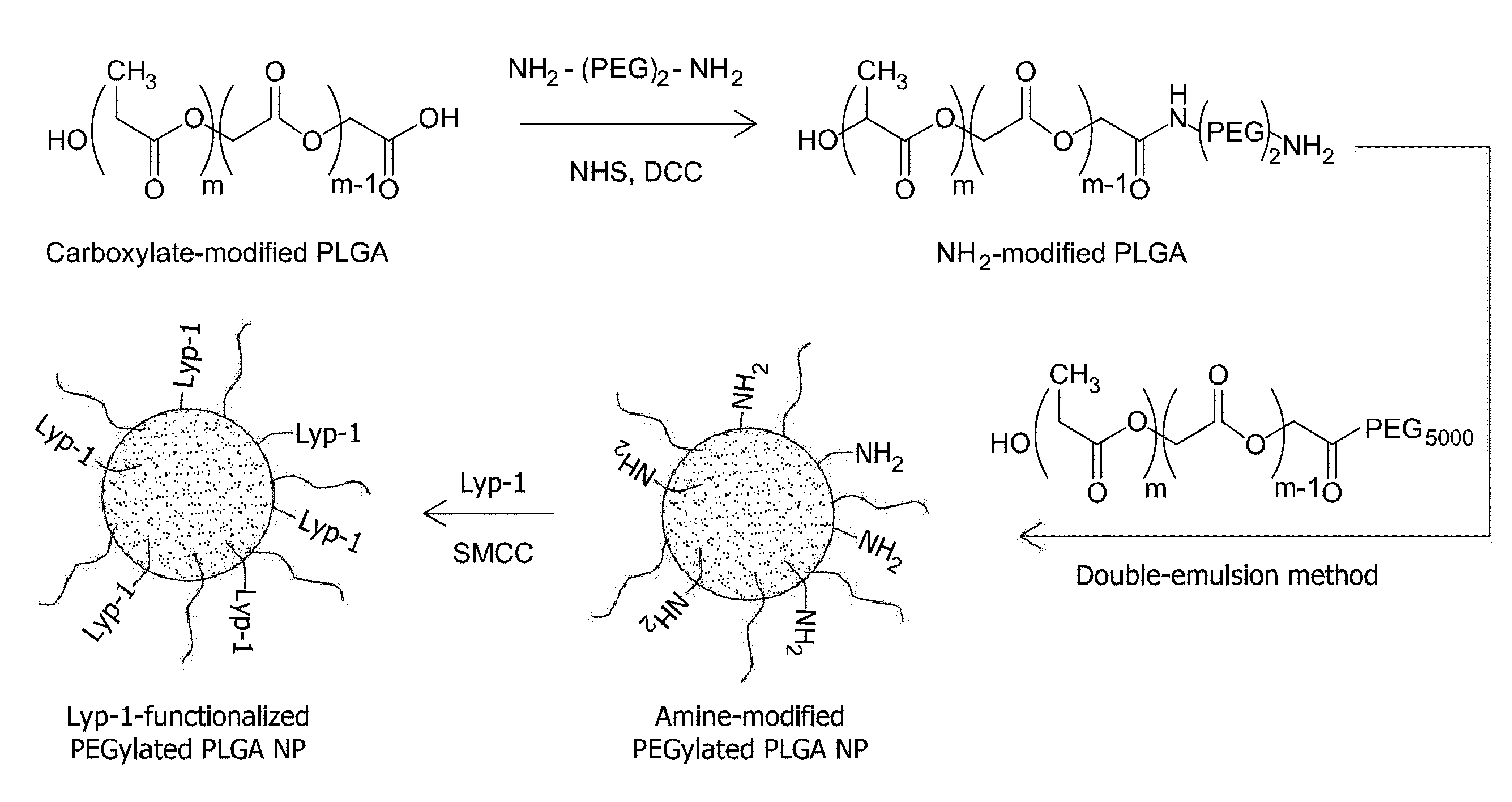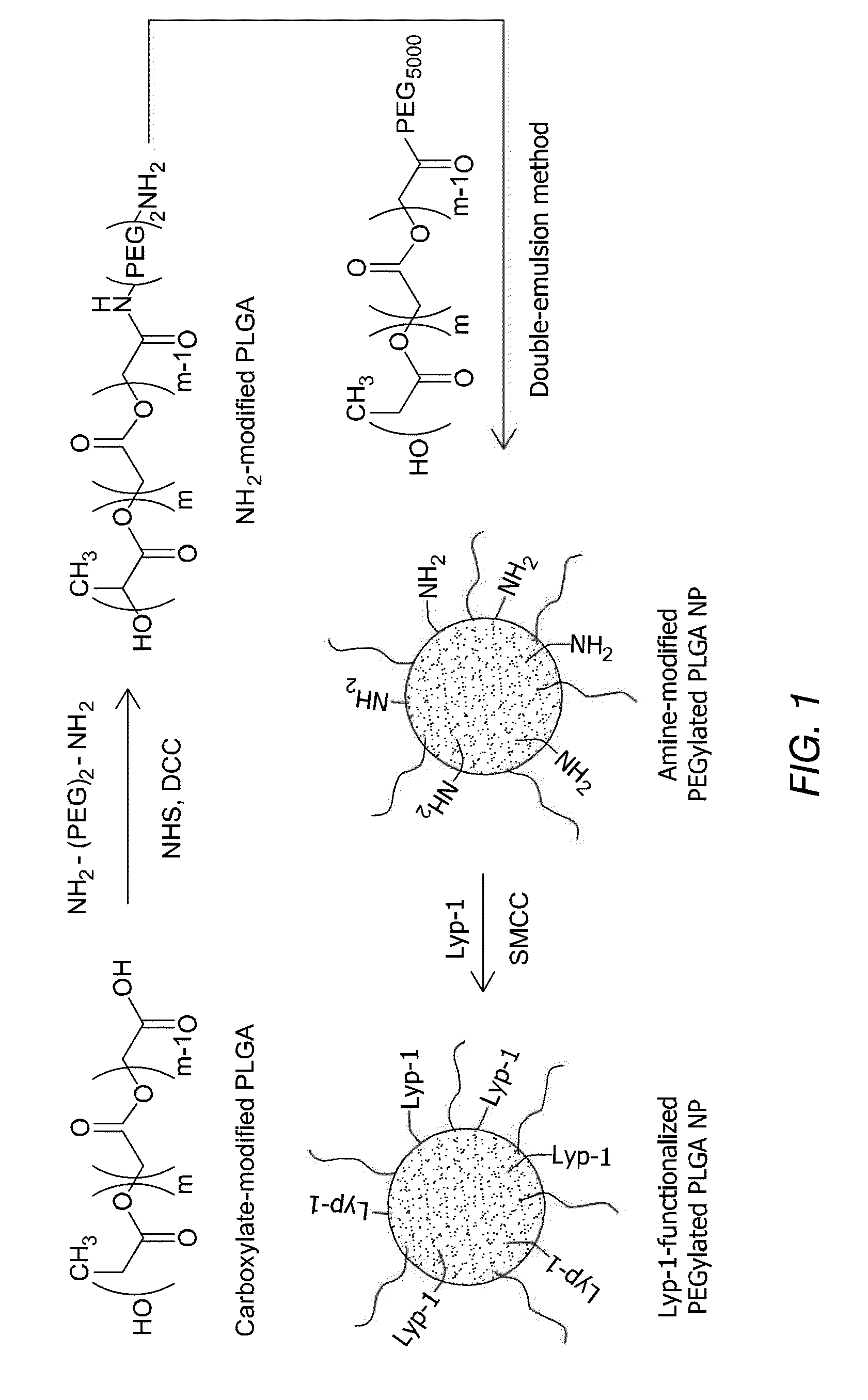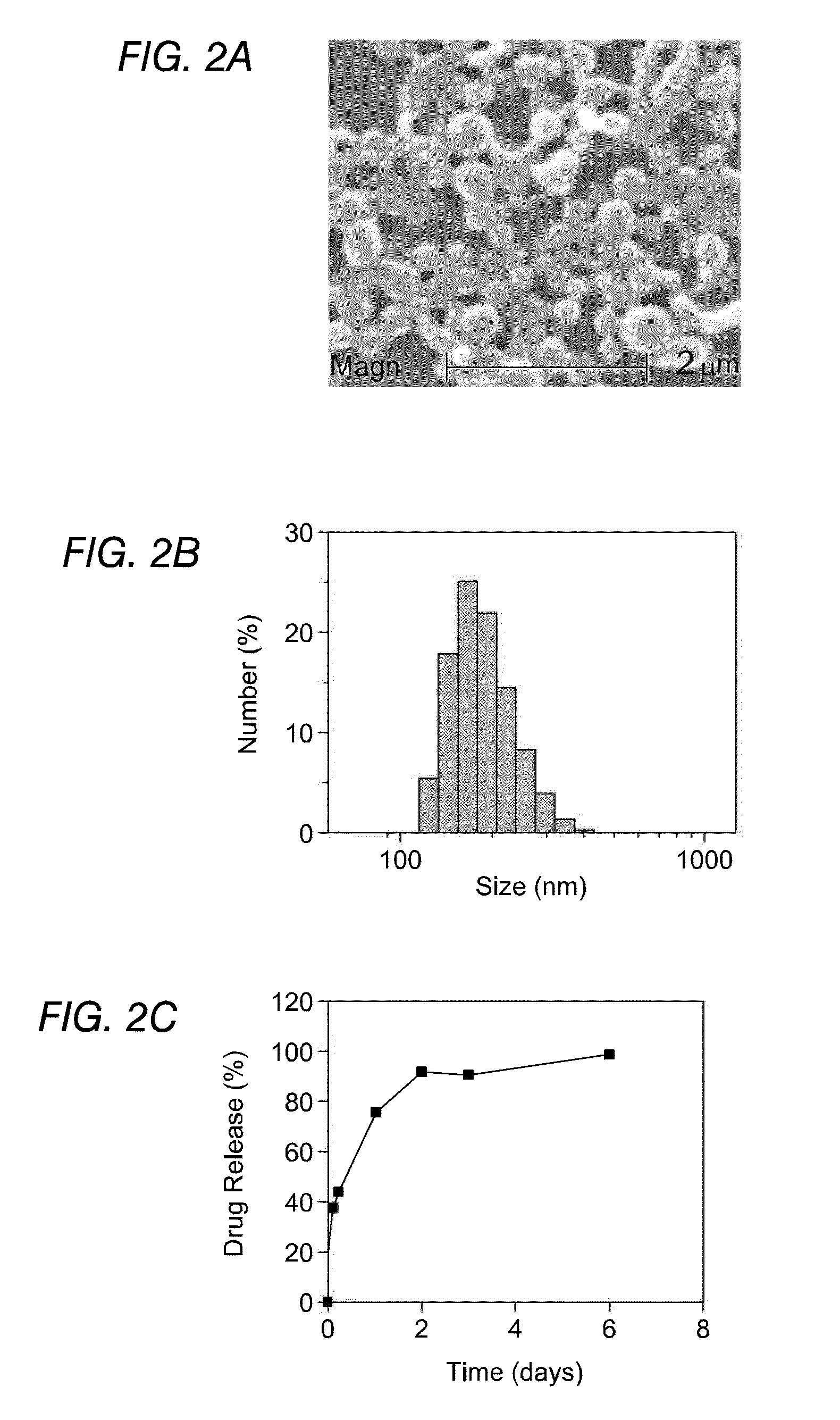Targeting tumor associated macrophages using bisphosphonate-loaded particles
a technology of bisphosphonate and tumors, applied in the field of cancer biology and drug delivery, can solve the problems of ineffective and unsuitable current approaches to attack tams, serious side effects of non-specificity, and ineffectiveness, and achieve the effect of reducing the density of tumor associated macrophages and reducing tumor associated macrophages
- Summary
- Abstract
- Description
- Claims
- Application Information
AI Technical Summary
Benefits of technology
Problems solved by technology
Method used
Image
Examples
example 1
Preparation of Nanoparticles Comprising Clodronate and Tumor Specific Targeting Peptide
Clodronate was purchased from Sigma. Sulfo-SMCC was from Pierce. Biodegradable PLGA (50:50 lactide:glycolide, MW 47,000) was purchased from Boehringer Ingelheim. The organic solvent dichloromethane (DCM) and poly(vinylalcohol) (PVA, MW 9000-10,000, 80% hydrolyzed) were also purchased from Sigma.
Peptides were synthesized with automatic microwave assisted peptide synthesizer (Liberty; C E M, Matthews) using standard solid-phase Fmoc / t-Bu chemistry. During synthesis, the peptides were labeled with 5(6)-carboxyfluorescein (FAM) with a 6-aminohexanoic acid spacer separating the dye from sequence.
A water-in-oil-in-water double-emulsion-solvent evaporation method was used to prepare clodronate-loaded PLGA NPs (E. Cohen-Sela, O. Rosenzweig, J. Gao, H. Epstein, I. Gati, R. Reich, H. D. Danenberg, G. Golomb, J Control Release 2006, 113, 23). Briefly, 0.5 ml of a 4% aqueous solution of clodronate (pH adjuste...
example 2
Clodronate Nanoparticle Formulation
The clodronate-loaded PLGA nanoparticles prepared according to Example 1 were studied for examined encapsulation efficiency (EE), morphology, particle size distribution and release kinetics. During the study, morphology of the nanoparticles was studied through scanning electron microscopy. As seen from the electron micrographs in FIG. 2a, the nanoparticles were smooth and spherical in shape. The size distribution illustrated in FIG. 2b shows an average diameter of 180±20 nm.
An analysis of the amount of clodronate encapsulated in the NPs revealed that 51% of the drug was entrapped in the particles. The release rate of entrapped clodronate was studied and the result is shown in FIG. 2c. The kinetic data showed that majority of the drug release occurred in the first day (approximately 80%) and the release amount almost remained unchanged after 48 h. The “burst effect” release phenomenon, where drug is released in the very early stages, was observed as...
example 3
Selective Toxicity of Nanoparticles Comprising Clodronate and Tumor Specific Targeting Peptide
The cytotoxicity of clodronate alone and clodronate-loaded PLGA nanoparticles (clodNP) as prepared in Example 1 were tested in vitro on mouse macrophage (RAW264.7) and human fibroblast (CCL-110) cell lines. The RAW264.7 monocyte / macrophage mouse cell line was obtained from the American Type Culture Collection (ATCC) and cultured in DMEM media containing L-glutamine and sodium pyruvate (Mediatech), supplemented with 10% fetal bovine serum (FBS) and 100 IU / ml penicillin / streptomycin.
Cells were incubated with clodNPs as well as with blank NPs and free clodronate drug at a concentration of 250 μg / ml. As shown in FIG. 3a, clodNPs but not blank NPs exhibited dose-dependent toxicity of RAW264.7 macrophages in vitro. Furthermore, as shown in FIG. 3a, clodNPs exhibited substantially greater toxicity of RAW264.7 macrophages in vitro compared to clodronate alone. As shown in FIG. 3b, treatment of RAW2...
PUM
| Property | Measurement | Unit |
|---|---|---|
| diameter | aaaaa | aaaaa |
| diameter | aaaaa | aaaaa |
| sizes | aaaaa | aaaaa |
Abstract
Description
Claims
Application Information
 Login to View More
Login to View More - R&D
- Intellectual Property
- Life Sciences
- Materials
- Tech Scout
- Unparalleled Data Quality
- Higher Quality Content
- 60% Fewer Hallucinations
Browse by: Latest US Patents, China's latest patents, Technical Efficacy Thesaurus, Application Domain, Technology Topic, Popular Technical Reports.
© 2025 PatSnap. All rights reserved.Legal|Privacy policy|Modern Slavery Act Transparency Statement|Sitemap|About US| Contact US: help@patsnap.com



